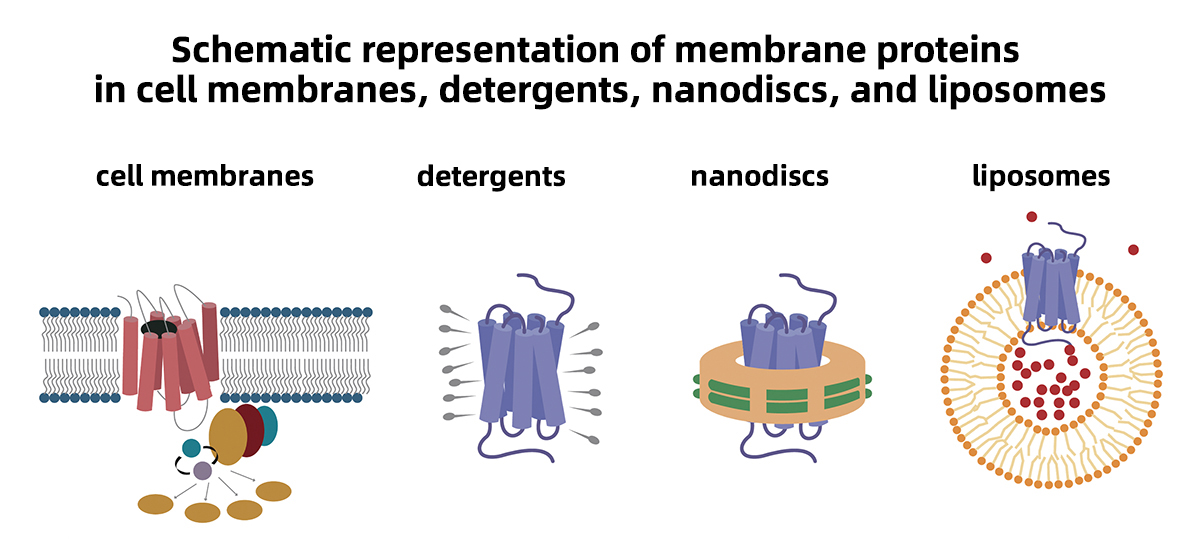Reconstitution of Membrane Proteins onto Lipid Nanodiscs or Liposomes
The main components of nanodiscs are natural or synthetic phospholipids, and membrane scaffold proteins (MSP). MSPs and phospholipids can form a disc-shaped bilayer with MSPs surrounding the lipid bilayer in a belt-shape. To prepare nanodiscs, a mixture containing phospholipids, MSP, and a detergent is first prepared, followed by the removal of the detergent. A nanodisc typically has a diameter of 8-16 nm, depending on the type of MSP used in nanodisc preparation. A uniform nanodisc sample can be prepared under the control of the phospholipid-to-MSP ratio. Liposomes are vesicles composed of lipid bilayers or multilayers. There are many methods to prepare liposomes. Liposomes are prone to aggregation and fusion and are generally unstable under prolonged periods or certain physical manipulations. To prepare liposomes, the lipids are dissolved in a volatile organic solvent and dried under an inert gas stream, and then converted into liposomes through various methods including sonication, homogenization, and extrusion through a filter with a pore size of generally 100-200 nm. Membrane proteins reconstituted into nanodiscs or liposomes are thought to maintain states close to those in the cell membrane lipid bilayer, and can be used for production of antibodies in animals, drug screening, and other biophysical and biochemical analyses, such as electron microscopy, NMR, EPR, and other spectroscopies.

For more information about our technology and services, please contact us.
Contact Us